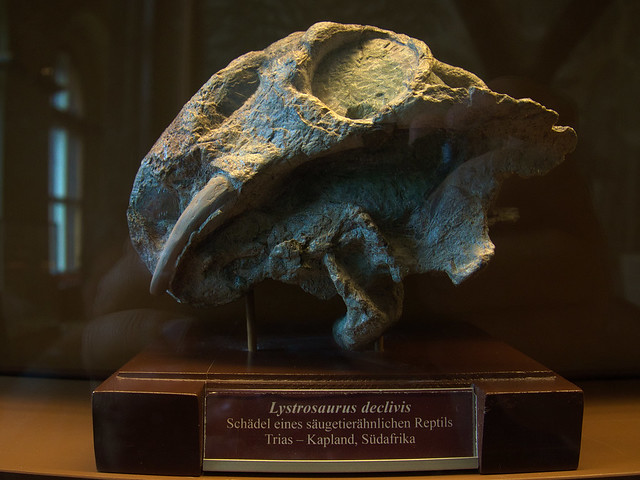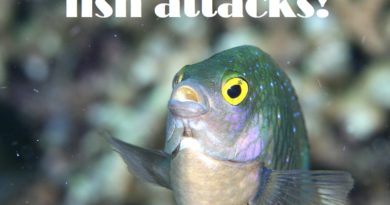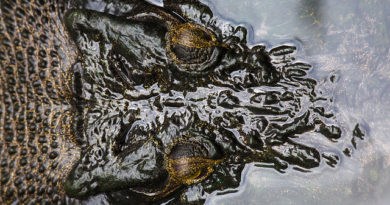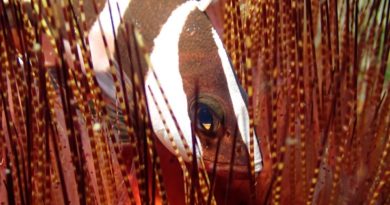Fish Journal Club: Range Expansions
A really interesting paper just came out which covers the range expansion of marine fishes along the Australian East coast. Ocean temperatures are warming, of course, and that has consequences for the distribution of the marine fauna right now, not in some predicted future. Cristián Monaco and colleagues from the University of Adelaide and colleagues studied what makes some fish species more prone to moving south (that’s towards the pole in Australia) than others.
It’s the Diet
It was already known that generally certain features of fishes make them more apt to expand their ranges. When their original range has a wider extent in the north-south direction, they are more apt at dealing with different temperatures and the other environmental changes that go with temperature changes, and are hence more apt to colonize new areas.
An important point to consider is that range expansion is a process with several stages. The fish need to reach their new homes, likely via larval dispersal (fish larvae drift in the water column to a new home), and then settle there, eating new food, and dealing with new predators.
The study by Monaco and colleagues analyzed surveys done at Cabbage Tree Bay, Sydney and Bar
nearby Beach in Merimbula. These spots are where in the past the range of many tropical fish species had their southern edge. The survey checked for the presence or absence of fishes during snorkel expeditions which were conducted at least monthly.
A lot of interesting, well done, but for the layperson possibly slightly confusing statistics later, the marine biologists had results regarding how early a fish species showed up south, how well it did in prevailing in its new location, and how irregular (patchy) the species’ presence was. They observed a total of 71 tropical species in warm-temperate Sydney waters.
From all of this analysis they concluded that in their case diet breadth, the ability to feed on a variety of foods, was the best explanation for which fishes arrived early and did well in colder these waters than usual. Fishes which were less picky managed to migrate better. This can have several reasons – there will be more food available for these generalists, and they will be less likely to compete with already established fish species. Interestingly the authors note that some damselfish are capable of learning from other fishes what to forage for when they swim in mixed schools. This kind of learning wouldn’t work for food specialists who can only feed on one or a few types of edibles.
Similar to the End Permian Extinction
It’s an interesting, but not a very surprising find that generalists do best under such conditions of rapidly changing climate. There is a historical precedent for this – 250 million years ago the most massive extinction so far on Planet Earth happened, at the end of the Permian. After the extinction, the fauna on land mas almost completely dominated by species of mid-sized generalist reptiles called Lystrosaurus for several 100 000 years. Mid-sized generalists do well when the biosphere is in turmoil.
This is the skull of a Lystrosaurus I photographed in the natural history museum in Vienna:
Hands on Range Expansion
I had the pleasure of living and diving in Sydney for three years, and I repeatedly observed species in the Sydney region which seemed rather tropical to me. The last year when I was in Australia was an El Nino year, a warm weather system which superimposes on the general warming trend – the water was especially warm, and the tropical visitors were especially common. These were observations of fishes which I saw every week while diving, nothing more, I didn’t do a scientific study on the topic. It’s nice to see someone put in the work to systematically investigate what makes some species better than others at shifting regions with warming waters.
If you want to play a bit with expanding fish ranges on your own, Fishbase provides a tool for this. You can look at distribution maps as of the present, 2020, and, for instance for the well-known Moon wrasse you will get this:
If you click on “Year 2050 native range” above the map, the webpage calculates where the wrasse could expand to if it follows the warming ocean temperatures. Note, for instance, that it will reach much further north along the west coast of Japan. This calculation does not include the effects of diet preference and larval duration, as discussed in the paper above, it simply extrapolates the current home range based on known temperature preferences of the fish.
You can generate this map for most species in Fishbase, have fun exploring!





